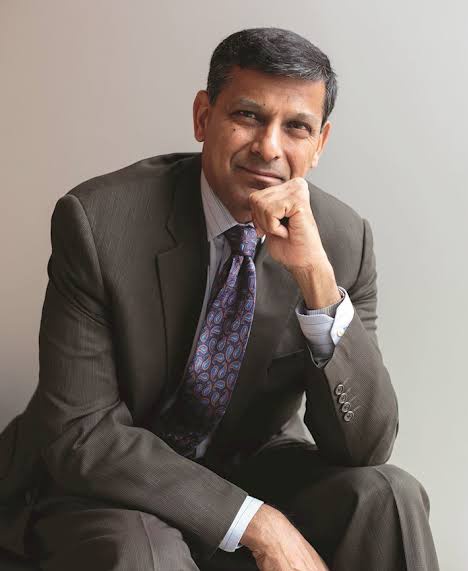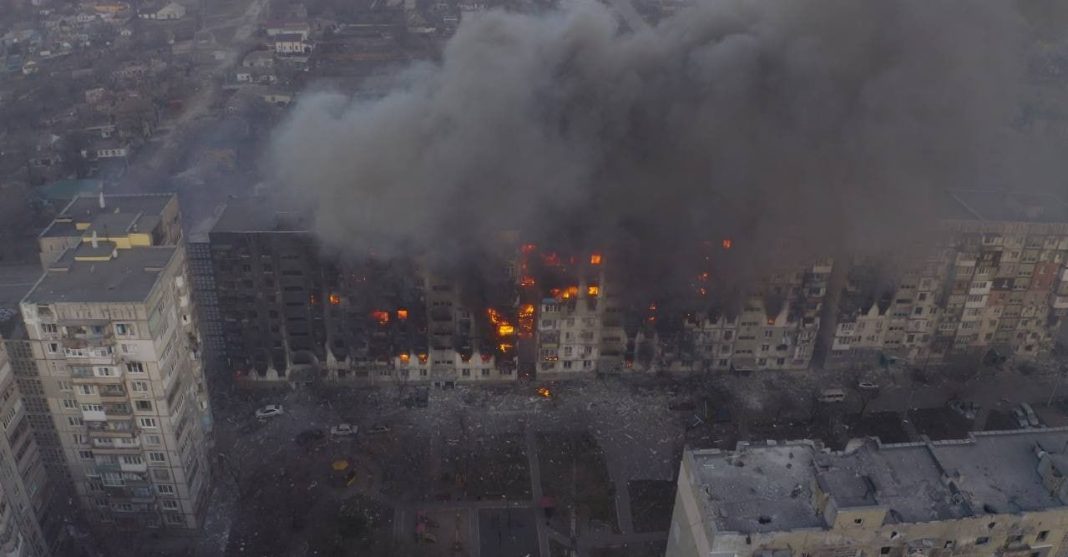By Sujit Bhar
As this article is being written, over a month has passed since Russia invaded Ukraine, talks have started in Istanbul between Russian and Ukrainian representatives, Russia has said it wants to scale down offensives, insisting that its Phase 1 action is over, thousands have died, nearly 4 million have been displaced and sanctions have jackhammered the Russian economy into putty.
That, however, is just news. When you look behind the wings of this theatre of the absurd, you realise that this entire situation could see the evolution of a whole new paradigm in war and post-war economics. There are two related aspects to consider. One is the sheer economic impact, and the second is the industrial takeaway from war-related expenditure of nations.

The possible economic shift was pointed out in a recent interview by Raghuram Rajan, the former governor of the Reserve Bank of India and a noted economist. He said that economic sanctions announced by the US and other European nations on Russia, are another Weapon of Mass Destruction (WMD). It has the potential to inflict as much destruction of lives and property as conventional WMDs. The effects of this slow-poisoning will not be evident immediately, but will cause widespread destruction of a nation’s economy. That cannot bring peace.
The industrial shift, on the other hand, will be mostly visible in the United States. There is the well-established case of the US weapons manufacturing industry—representing possibly the strongest lobby in US Congress—pushing a weak President Joe Biden to do its bidding for them and issuing re-weaponisation orders that will only benefit the defence industry at the cost of the American taxpayer.
This, when seen in the backdrop of the cessation of action in Afghanistan and with no other emerging conflict hotspots in sight, makes business sense. Every Congressman/Senator has, in his/her constituency, at least one weapons making/assembly unit that provides constant employment to a large number of voters. This is important political territory to protect.
Also Read: Delhi Riots: Court discharges three accused for having no substantial proof
The issues have simultaneous and compounding effect, but can be dealt here individually for clarity.
The Economic WMD issue
During the interview, Rajan put forth a rather scary picture. In describing the sanctions as “economic weapons of mass destruction”, he warned that the consequences of this need to be considered carefully. He said that this is sure to have effect, both on individual economies and people, as well as for the “global economy and the global financial system.”
How can these sanctions translate into a global tragedy? Rajan’s analysis sees years ahead. He said that these sanctions may not topple buildings, destroy bridges or immediately kill people, but they will destroy firms, financial institutions, livelihoods, and even lives. He said that even if it takes time, these sanctions—the Economic Weapons of Mass Destruction —will “inflict pain indiscriminately, striking both the culpable and the innocent.”
That was not the end. In his interview with Karan Thapar for The Wire, Rajan pointed out the other possible fallouts of the “overuse” of sanctions. Apart from the fact that the sanctions could shrink the Russian economy by as much as 10%, he said that the “lack of norms governing them” could lead to a reversal of the very “process of globalisation that has allowed the modern world to prosper.”
Also Read: Chief Justice of India-XI celebrate their maiden victory in the annual cricket match
The following could be the other outcomes:
- Interaction between countries will shrink.
- “Countries might start exploring collective alternatives to the SWIFT financial messaging network, potentially leading to fragmentation of the global payment system”. He pointed out that China has already been trying to “build up CIPS as an alternative to SWIFT and this could now be not just expedited but many other countries might choose to prefer CIPS to SWIFT.”
- The big picture: “While at this moment… excluding countries like Russia from SWIFT looks like a sign of strength, it could actually lead over time to the diminution of SWIFT or its sizing down.
- “While countries may not be able to diversify their holding into other currencies—because many, like the Pound, Euro, Yen, may also be subject to similar sanctions—they could consider adopting a strategy of deliberately inviting western institutions and banks to their country and then seek to hold them hostage in case their own reserves are sanctioned. This would be a policy of mutual hostage-taking and would fracture the trust on which the global financial system works.”
The possible outcomes will not only devastate Russia, but could ultimately decimate the trust factor that drives international markets. This can destroy the economic fabric as we know it.
The Warmongering Issue
Now, over to the American war industry. American taxpayers have always—mostly after World War II—been fooled by their governments into believing that the US goes out into the world to “save democracy” or to “save humanity”. Presidents behave like the Avengers and the entire Comic Con experience is adrenaline driven.
Also Read: Pre-legislative Impact Assessment
Recently, President Biden signed a $1.5 trillion government funding bill that allocates $782 billion towards defence. Think of those numbers for a moment. Most importantly, these projected growth factors come supposedly when the US is not actively involved in any conflict zone.
This bill is $30 billion above Biden’s initial request and nearly 6% higher than last year’s package. It has been reported that the bill also provides $6.5 billion in military support for Eastern European countries, including $3.5 billion in additional weapons for Ukraine. The apparent alpha posturing of Biden in Poland, and his outlandish comments against President Vladimir Putin—asking the people of Russia to overthrow the Putin administration—has become a diplomatic nightmare in Europe.
The Guardian has rightly pointed out that while “in January he (Biden) had suggested a Russian advance into Ukraine would constitute no more than ‘a minor incursion’… In March, he is telling American troops in Poland that they would soon see brave Ukrainians defying Russia ‘when you are there’. America would ‘respond in kind’ to a chemical weapon attack on Ukraine… Biden went further, calling Putin a ‘butcher’, one who ‘cannot remain in power’.”
The change in attitude of Biden is clearly not the US President’s own making. He is being prompted from behind.
The Hill points out in no uncertain terms that the “Russia-Ukraine conflict is a boon for American defense (sic) contractors, which are in line to profit from increased Western military spending to bolster Kyiv’s forces and adapt to instability in the region.”
This comes out in the open with the new spending bill raised by Biden. It has been reported that the “additional Ukraine aid comes on top of more than $1 billion the U.S. has already spent in the past year to arm Ukrainian soldiers with modern weapons, including Javelin anti-tank missiles, manufactured by Lockheed Martin and Raytheon Technologies, and Raytheon’s anti-aircraft Stinger missiles.”
One year; remember that timeframe. The Russians invaded Ukraine on February 24, 2022. So why was the US arming the Ukrainians for so long? What were they expecting?
Also Read: Allahabad High Court dismisses PIL seeking 10 percent quota under EWS in Judicial Service Exam 2020
The Financial Quagmire
The “aid” or “soft loan” concept that was sine qua non for all deliveries from the west to other nations in the past is not dead. No country, least of all the United States, will deliver even one bullet of a rifle to another country without a financial string attached. The general camouflage, of course, is that either “democracy” or “humanity” is at peril. Even that camouflage is not necessary when such “aid” is related to, say, the Republic of Congo. But the Republic of Congo just cannot pay back. Hence that is not a fair deal.

The NATO market
NATO lost its purpose when the erstwhile Soviet Union broke up. This led to several European nations reducing defence manufacturing to such an extent that a major war in Europe might suddenly bring to the fore the complete lack of preparedness of major countries, such as the UK and Germany. France still maintains its preparedness and has the ability to pump up its production, but that was not for NATO to survive, but for export.
The NATO forces are well armed, but nothing in comparison to what the US has, or even Russia. Now NATO can become a major buyer.
One may say that this thinking came from Biden—he has to make good the losses of the defence industry in his pull-out from Afghanistan—but such defence policies may not have been new.
In July 2018, former US President Donald Trump said that he was ready to help smaller NATO countries to buy US weapons “as he pushed them to spend more on their own defence.” Defence against what? Wasn’t Trump a ‘friend’ of Putin?
Trump made this comment in a press meet after participating in the NATO Summit in Brussels. He reportedly said: “…nations had agreed on new spending pledges…” The Reuters report also said that “some less wealthy members (of NATO)” had asked during meetings in Brussels if he (Trump) could help them buy US arms equipment… Of course, the countries were not named by Trump.
Trump was clear about the deal: “We are not going to finance it for them but we will make sure that they are able to get payments and various other things so they can buy—because the United States makes by far the best military equipment in the world: the best jets, the best missiles, the best guns, the best everything.”
The defence policies of the US seem to be tailored for all presidents by the defence equipment manufacturers, the contractors and the Pentagon. Hence they have barely changed from Barack Obama to Trump to Biden.
And this is the best opportunity for the US to boost arms sales to NATO. There is a huge threat perception now.
Even in the US, Russia’s action has pushed defence manufacturing. Following the Russian invasion, Congress approved its largest-ever defence spending bill. At the same time, US allies in Europe pledged to dramatically ramp up their defence spending, apparently to “counter the Russian threat”.
How much is at stake?
For now, “tens of billions of dollars worth of contracts will be distributed,” as William Hartung, senior research fellow at the Quincy Institute for Responsible Statecraft, put it. He points out that this “is no small thing, even for these big companies.”
According to Arnold Punaro, a retired three-star general and former staff director on the Senate Armed Services Committee, quoted in the media: “There’s an old saying: ‘A high tide raises all ships.’ So I think when you start putting that kind of money into the pipeline, certainly we want our companies to compete for that.”
And a defence lobbyist spills the business model: “The near-term implications of quickly sending more equipment and defensive systems to the Ukrainians means we’re going to have to backfill some of that ourselves, so that will force the Pentagon to buy more from some of the defence companies.”
Add to that the possible NATO requirement, and you can see a massive boost in defence spending from many quarters.
Germany, now out of Chancellor Angela Merkel’s regime, has placed the Russian aggression in the diplomatic and economic backdrop and has said that it would purchase up to 35 American Lockheed Martin F-35 fighter jets. This is a reversal from its previous plan to revamp its aging fleet with a combination of older, less expensive American- and European-made jets.
Late last month, new Chancellor Olaf Scholz had announced that Germany would invest $111 billion in a new military investment fund and increase defence spending above 2% of its gross domestic product. Other countries which have announced increase in defence spending are Poland, Sweden and Italy.
One clear indicator has been that since the start of 2022 (much before the Russian invasion) Lockheed Martin’s stock has soared nearly 25%. Raytheon, General Dynamics and Northrop Grumman stock prices rose by an average 12%. All that happened to save democracy and humanity in distant parts of the world. Somebody knew the inner workings of international markets.
Also Read: Lakhimpur Kheri Violence: Supreme Court reserves its order in plea challenging bail to Ashish Mishra
The big picture
How can one view the overall situation, in the above backdrop? Here are the options:
- Russia loses steam: Russia has been forced to spend beyond its capacity and is looking for a face-saving exit from Ukraine. It has already said that Phase 1 of the war is over that their “main objective” of freeing the Donbass region has been achieved. Also, Ukraine’s President Volodymyr Zelenskyy has said that he no more wants to be part of NATO.
- Russia sinks into economic disarray: The overall result of the strains of war and sanctions destroys the economy and the Rouble tanks. There is hunger and corruption in Russia and, despite discounted sales of fuel to India and China, the country is reduced to begging for aid.
- The cost of rebuilding Russia: Maybe Putin will stay, maybe he will be dislodged. But if Russia is to again gain access to the nearly trillion dollar deposits in stocks and bonds that have been frozen in the West, Russia might have to stop its war machine and buy goods from the West, or China.
- China takes up the space: Whether it is financial or strategic, China is in a great position to extend its influence further. If the SWIFT system is affected, a China-based model can take over the financial exchange markets. Money will find it more difficult to travel cross nations and continents, affecting world trade.
- China in Russia: Vladivostok, the eastern extreme of Russia, now filled with immigrant Chinese traders, could slowly fall back into Chinese hands. The Russian mainland will then be breached.
- Rebuilding Ukraine: The destruction of Ukraine will also mean the rebuilding of it. Guess which country’s real estate developers will have the biggest say? If in doubt, look at Iraq and Kuwait.
- Defence rebuilding of Japan: Japan has already committed to rebuilding its defence forces. Now it will start by importing arms and arsenal. Guess which are the countries to benefit?
- The trade medium: There is a probability that the Rupee-Rouble and Yuan-Rouble trades will gain traction to a huge extent. The dollar standard might slowly be restricted to the western hemisphere.
- Banking anomalies: If money cannot flow easily, money will stagnate. And that is not good for any economy. The banking systems might see major overhauls. Even the crypto currency future looks good, but that is not a stable method of funding an economy.
- The hunger games: Europe’s bread basket is in ruins. India can gain, China will, so will palm oil producers such as Malaysia.
- A new picture: The world economy may break into two, somewhat unequal but distinct parts, one in the eastern hemisphere one in the western. When Russia is under pressure, India will have to shift its weapons purchases to the west, where the dollar rules. Or, Indian companies might be able to set up companies in Russia, availing of technology. The Chinese won’t be too far behind, though.
This war has the ability to destroy and reshape. Sadly, the Ukrainians will have paid heavily, so would have the common Russian. Joe Biden will, probably, fade into ignominy. Watch out for the future of Iron Man Zelenskyy. He seems to have acted the key facilitator.
The author writes on legal, economic and corporate issues, apart from social commentary. He is Executive Editor at India Legal


